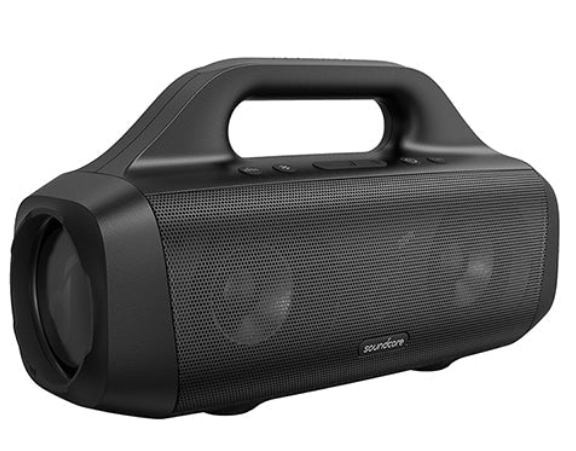When selecting speakers, you often come across terms like “watts” and “watts per channel.” Understanding what watts mean on speakers is crucial for making informed decisions about your audio equipment. This guide will explain the significance of watts, how they relate to decibels and sound levels, and what you should consider when determining the right wattage for your speakers.
Watts in Speakers Explained
Watts measure the amount of power a speaker can handle from an amplifier. The power rating in watts indicates how much electrical energy the speaker can convert into sound without being damaged. There are two main types of wattage ratings to consider:
1.RMS (Root Mean Square) Watts:
○ Continuous Power: RMS watts represent the continuous power a speaker can handle over an extended period. This rating gives a realistic measure of the speaker’s performance under normal listening conditions.
○ Consistency: RMS power is a more reliable indicator of a speaker’s capacity, as it reflects consistent performance without risk of damage.
2.Peak Watts:
○ Maximum Power: Peak watts indicate the maximum power a speaker can handle in short bursts. This is not a sustainable power level but rather the highest limit the speaker can tolerate momentarily.
○ Caution: While peak power ratings might look impressive, they don’t provide a complete picture of the speaker’s overall performance and reliability.

What Are Decibels and Levels and How Do They Affect Wattage in Speakers?
Decibels (dB) are a unit of measurement for sound intensity, indicating how loud a sound is. The relationship between watts and decibels is logarithmic, meaning that a small increase in wattage can result in a significant increase in decibel level. Understanding this relationship helps in determining the efficiency and performance of your speakers.
1.Decibels (dB):
○ Sound Pressure Level (SPL): The decibel rating of a speaker indicates its sound pressure level, which measures the loudness of the sound produced. Higher SPL means louder sound at a given power level.
○ Sensitivity: Speaker sensitivity, measured in dB, indicates how effectively a speaker converts power into sound. A higher sensitivity rating means the speaker requires less power to produce the same volume as a speaker with lower sensitivity.
2.Levels:
○ Input and Output Levels: The input level is the power fed into the speaker, while the output level is the sound produced. Proper matching of these levels ensures optimal performance without distortion.
○ Gain Control: Adjusting the gain control on your amplifier affects the input level to the speakers, influencing the overall volume and sound quality.
How Many Watts Is Good For Speakers?
The ideal wattage for your speakers depends on several factors, including your listening environment, speaker sensitivity, and the type of audio you enjoy. Here are some general guidelines to help you determine the right wattage:
1.Room Size:
○ Small Rooms: For small to medium-sized rooms, speakers with an RMS rating of 20-50 watts per channel are typically sufficient. This provides enough power for clear and detailed sound without overwhelming the space.
○ Large Rooms: In larger rooms or outdoor settings, speakers with an RMS rating of 50-100 watts per channel or more may be necessary to fill the space with sound.
2.Listening Preferences:
○ Casual Listening: If you primarily use your speakers for background music or casual listening, lower wattage speakers (around 20-50 watts RMS) should be adequate.
○ Critical Listening and Home Theater: For home theaters or high-fidelity audio setups, higher wattage speakers (50-100 watts RMS or more) provide the dynamic range and power needed for an immersive experience.
3.Speaker Sensitivity:
○ High Sensitivity: Speakers with higher sensitivity (90 dB or above) require less power to achieve high volumes, so lower wattage can still deliver impressive sound levels.
○ Low Sensitivity: Speakers with lower sensitivity (below 90 dB) require more power to reach the same volume, so higher wattage is beneficial.

FAQ
1. Is More Watts Better For Speakers?
Not necessarily. While higher wattage can provide more power and potentially louder sound, it does not automatically translate to better sound quality. Other factors like speaker design, sensitivity, and the quality of the components also play crucial roles in the overall audio performance.
2. Do Watts Tell You How Loud A Speaker Is?
Watts indicate the power handling capacity of a speaker, but they do not directly measure loudness. The loudness of a speaker is determined by its sensitivity (measured in dB) and the amount of power (watts) it receives. A more sensitive speaker can produce louder sound with less power.
3. Does More Watts Mean More Bass?
More watts can enhance the bass response, especially in speakers designed to handle low frequencies. However, the quality and depth of bass also depend on factors like the speaker’s design, enclosure type, and the size of the drivers. Simply increasing wattage without considering these aspects may not yield the desired bass improvement.
Conclusion
Understanding watts on speakers is essential for selecting the right audio equipment for your needs. While wattage is an important factor, it is not the only consideration. Speaker sensitivity, room size, and your listening preferences all play significant roles in determining the ideal setup. By considering these factors and understanding the relationship between watts, decibels, and sound levels, you can make informed decisions and enjoy high-quality audio performance from your speakers.
Properly matching your speakers with an appropriate amplifier, considering both RMS and peak wattage ratings, and understanding how decibels and sensitivity affect performance will help you achieve the best possible sound quality. Whether you’re setting up a home theater, enjoying music, or looking for powerful bass, the right combination of components will provide a satisfying and immersive audio experience.
